
The customer feedback is basically the information, suggestions, complaints, opinion, or just a thought your customers and your audience shared with you. There are two major classes of customer feedback, first is the feedback that customer share without asking and it is called passive feedback. And when the business ask the customer to share their feedback that feedback is called active feedback. In this blog we will focus only on the active feedback types. The customer feedback is a very valuable data which help businesses understand their customers and let them make strategies to maximize the satisfaction of the customers.
The customer feedback can be used to evaluate the product and services that you are offering to your customers. The feedback data can be used to improve your products and services and it also help in new service & product development processes. Businesses can also utilize the customer feedback to evaluate the entire customer journey and all touch points to analyze the customer experience. The customer feedback data can also highlight the areas of improvements and let businesses improve everything to align with customers’ needs, expectations and desires.
See Also: Why Your Business Needs a Customer Feedback System?

Here in Dubai and all around the UAE businesses have started adopting a more customer-centric business model since more than a decade now. It doesn’t matter which industry you operates in, the customer happiness and customer satisfaction is always the top priority. Here are some key benefits of taking customer feedback:
- Learn about customer persona
- Listening to the customer build trust
- The criticism help identifying the areas of improvements
- The praises help understand what you are doing right
- Completing feedback loop strengthen relationship with customers
- Feedback data help in learning new trends and customer expectations
- The customer desire, expectations and demands drive innovation
- Evaluate employee performance and improve training programs
- Acquire deeper insight to customer journey and customer experience
- Identify problems and bugs or if anything starts failing the customers
- Increase customer happiness and customer satisfaction
The customer feedback is a very powerful tool that can completely transform your products, services, internal business processes, marketing & communication, strategy, methods and the even the entire operations. It will help you align everything with the customer and develop strong long term relationships with your customers, which is a key to long term success and sustainable growth.
See Also: Key Features of a Customer Feedback System

Types of Customer Feedback
If we classify the customer feedback on the bases of the channels we are using to collect it then there are so many types and there are so many channels and methods which a business can utilize to collect the customer feedback. However, on the bases of the feedback type or the data type there are only a few major types or categories. Here are the five most popular and common customer feedback types:
- Net Promoter Score / NPS Score
- Customer Satisfaction Score Survey / CSAT Score
- Customer Effort Score Survey / CES Score
- General Feedback Surveys
- Social Media Feedback
Net Promoter Score / NPS Score
The net promoter score or NPS Score is a very common and very important type of customer feedback. The net promoter score is usually used to measure the customer loyalty. It asks customer if they would like to recommend the business or its products/services to someone else. It is a single questions survey but it can capture valuable data. The actual NPS Score is measured from -100 to +100 and the highest value is considered to be the best. The customers are asked a single question and they can respond on a rating scale from 0 to 10. Here are some examples of the NPS Score questions:
- How likely are you to recommend us[brand name] to your friends, family or colleagues?
- How likely are you to recommend our product [product name] to your friends, family or colleagues?
- How likely are you to recommend our service [service name] to your friends, family or colleagues?
The customer responds on a rating scale ranging from 0 to 10. Here is a NPS Score breakup:
- Promoters (Answer: 9 or 10): The respondents with answer 9 or 10 are the one most likely to recommend your business, products or services to others and these are also the most loyal and enthusiastic customers.
- Passives (Answer: 7 or 8): The respondents with the answer 7 or 8 are also considered to be the happy and satisfied customers. They might be satisfied with the service, but not happy enough to recommend you to others.
- Detractor (Answer: 0 to 6):The respondents with the answer 0 to 6 are not happy, and they will never become a promoter, they might not purchase from you again and they are also likely to discourage others from buying from you.
See Also: Leveraging Customer Feedback System for Business Growth
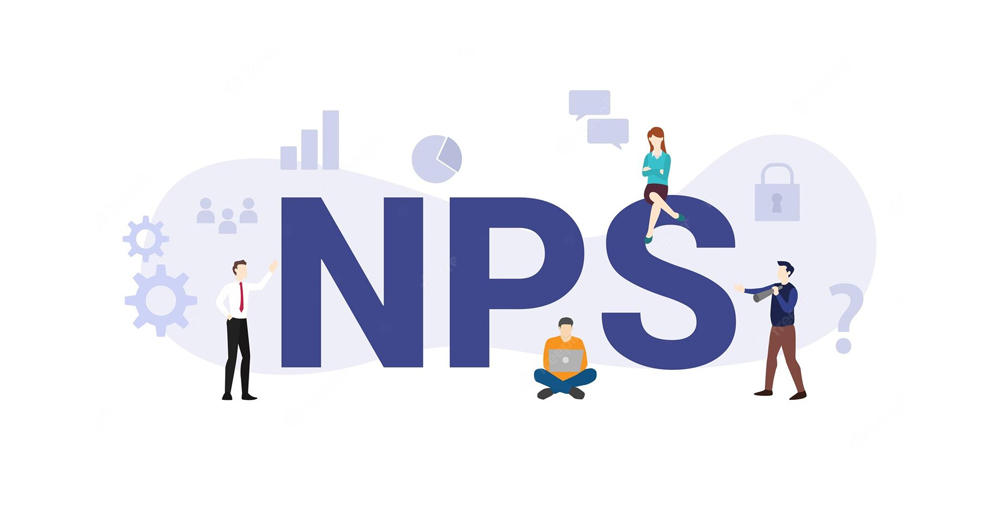
The calculation of the NPS Score is very simple, you just have to calculate the percentage of the promoters and detractors. Once that is calculated subtract the detractor from the promoters. For example, if the total number of respondent was 100, 70 were promoters, 20 were detractors, and 10 were passive. Then the percentage of the promoters would be 70% and the percentage of the detractors would be 20% and the NPS Score would be 70 – 20 = 50. The NPS Score is always a whole number, ranging from -100 to +100. Here is a formula to manually calculate the NPS Score:
- (Number of promoters − Number of detractors / Number of responses) × 100 = NPS Score
There are two mainstream methods to interpret your NPS Score to understand if your business is satisfying your customers or not. The first one is called absolute method, in the absolute method the 0 is taken as the reference point, and if the NPS score is below 0 you are in trouble. Because most of customers will pass bad words about your brand, and more likely to repel others from your business. The second method is called relative method, as name suggests, in relative method the NPS score is compared with the industry benchmarks. Usually a score from 30 to 50 is considered to be the best, but this varies from industry to industry.
See Also: Utilizing Customer Feedback for Competitive Advantage
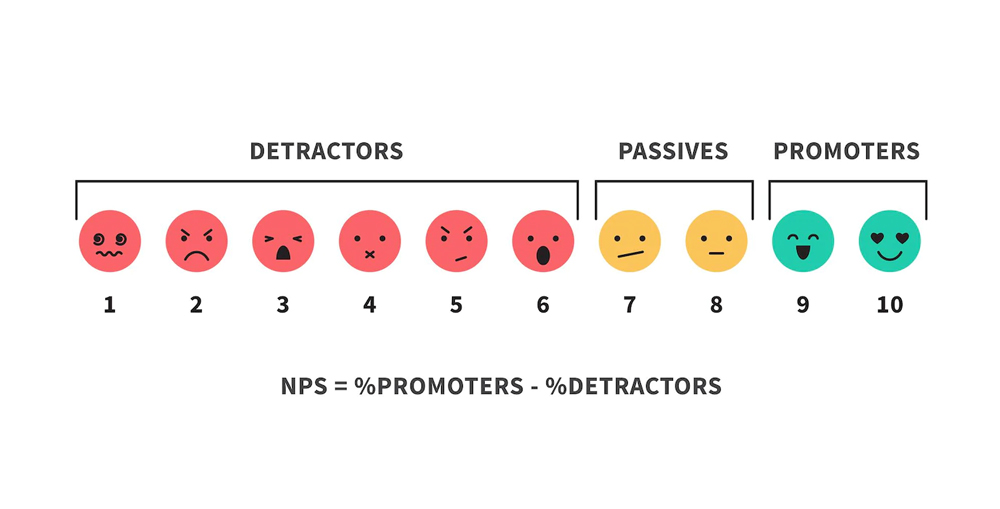
Customer Satisfaction Score Survey / CSAT Score
The customer satisfaction score survey or CSAT score is one of the most widely used customer experience matric which is usually used to measure customer’s sentiments for a product, service, support or any other interaction with the business. The CSAT score is different from the NPS Score, because it measures customer experience and not the customer loyalty. The customer satisfaction score surveys are also a great tool to understand the quantitative and qualitative performance. It tells businesses whether the customers are satisfied or not and it can also tell why they are happy or unhappy. Here are some examples of a typical CSAT survey question:
- How satisfied are your with our business [business name]?
- How satisfied are your with our product/service [product/service name]?
- How satisfied are you with your today’s interaction with our staff [support/service agent’s name]?
The SCAT Score surveys have usually one primary CSAT question which is followed by an open-ended questions/comment section. However, in some cases in order to acquire deeper insight businesses can also add more questions. It is important to keep your survey short as long surveys tend to have less conversion rate. However, businesses can have up to 10 total questions in a CSAT survey although typically a CSAT survey have only 2 or 3 questions.
See Also: What are the best devices to be used for Customer Feedback?
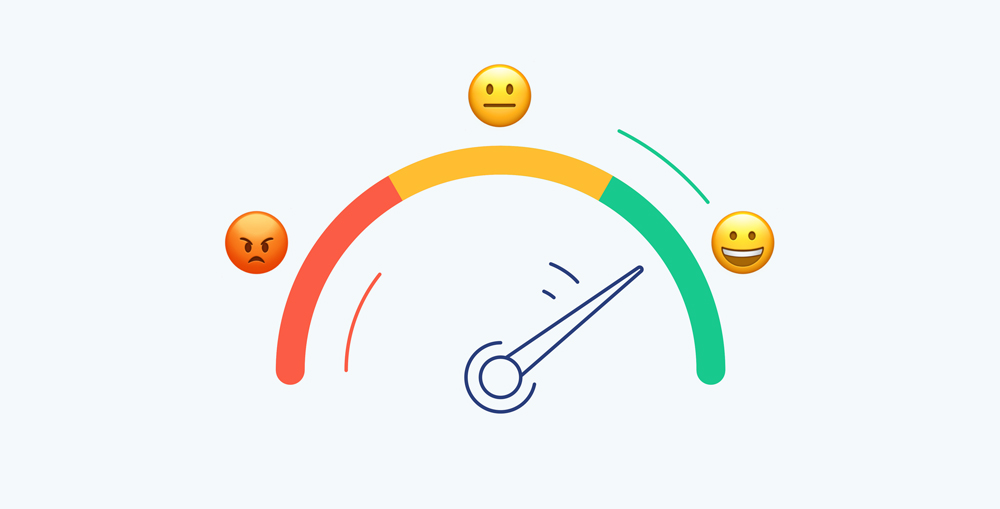
The CSAT score is usually measured within a range of 1 to 5. The CSAT score is measured in percentage, hence it can tell how many percent of your total customers are satisfied with a specific interaction or experience. The respondent are provided with a scale from 1 to 5 which usually also have tags such as:
- Very unsatisfied
- Unsatisfied
- Neutral
- Satisfied
- Very satisfied
Now a days businesses also use emoticons instead of the numbers, each emoticons represents a number to simplify the analysis and reporting. The satisfied customers are the respondent with answer 4 or 5, the remaining all are considered to be unhappy or unsatisfied. In order to calculate the CSAT Score you will have to take the number of satisfied customers (4 and 5) divided by the total number of respondent and then multiply it with 100. Here is the formula to calculate the CSAT Score:
- (Number of satisfied customers (4 and 5) / Number of survey responses) x 100 = CSAT Score
For example, if you have 76 satisfied respondents and the total number of responses was 110 then the CSAT score would be 69%. That is how the CSAT score is calculated. The CSAT score is tracked over the time and the dips in the CSAT score trend line will help you identify the causes of the customer dissatisfaction. Businesses can done more in-depth analysis to understand why they had a dip in the CSAT Score trend line.
See Also: The Role of Customer Feedback in Personalizing User Experience
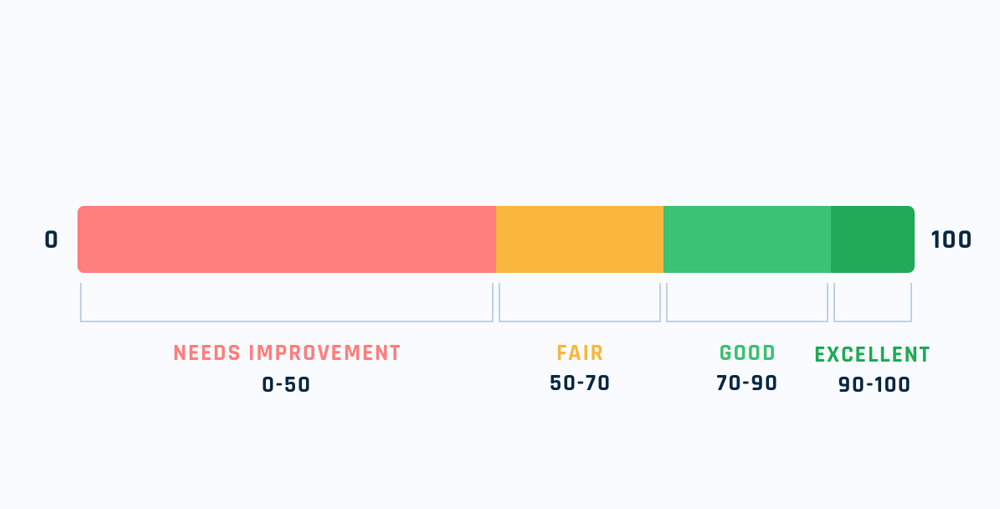
Customer Effort Score Survey / CES Score
The customer effort score survey or SES score is also a customer loyalty matric used to determine the level of difficulty or ease a customer have to face during the interaction with the business. It is used to measure the efforts a customer have to make throughout the customer journey or during an interaction with the business such as for solving a problem, etc. The CES score is measured at a scale of 1 to 7 where the 5 or 6 is considered to be the best. There is a reason the 7 is not the top rated, actually present day businesses offer a lot of self-service solutions, and they want their customers to utilize them too. In case if all customers are rating 7 that means they are already undermining the self-services. Here are some examples of the customer effort score questions:
- Likert Scale (1 to 7): How do you agree to the following statement – The [business name] made it easy for me to solve my problem?
- 1 to 10 Scale: How much efforts do you have to put to solve your problem today?
- 1 to 5 Scale: How easy it was to solve your issue?
- Emoticons (1 to 3 or 1 to 5): How easy it was to use our new payment method? Or registration process? Or updating your document through our self-service kiosk?
The CES Score or customer effort score is usually measured through the likert scale. The likert scale ranges from 1 to 7 where 1 represents the Strongly Disagree, then 2 for Disagree, 3 for Somewhat Disagree, 4 for Undecided/Neutral, 5 for Somewhat Agree, 6 for Agree, and 7 for Strongly Agree. Here is the formula to calculate the CES Score with a likert scale:
- (Sum of CES Score / Total Number of Respondents) x 100 = CES Score
The CES Score is usually measured in percentage, so if a likert scale is used, then the 5 to 7 values will be taken as positive response, and the CES score can be calculated by simply dividing the sum of results by the number of total respondents and then multiply by 100.
See Also: Overcoming Challenges in Customer Feedback Collection and Management
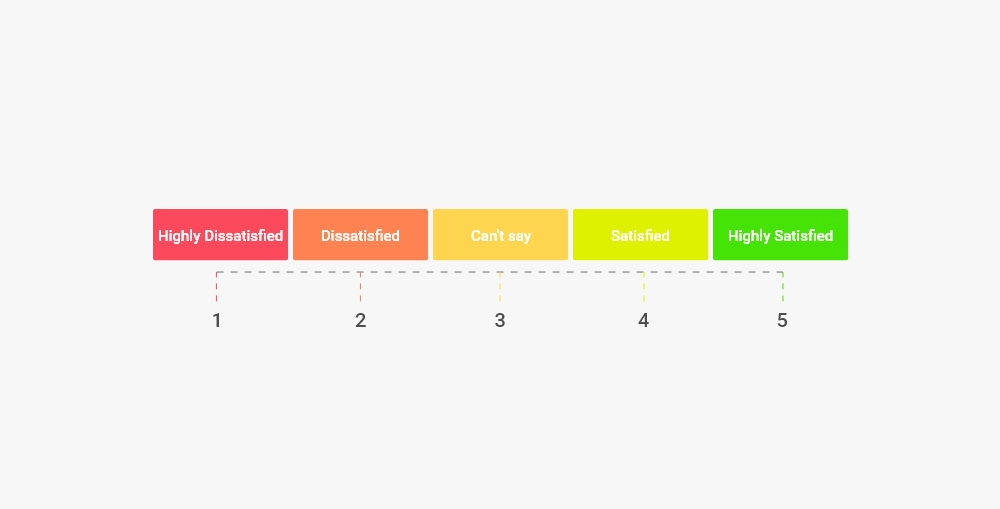
For the 1 to 10 scale, the CES can be calculated by dividing the sum of CES scores by the total number of respondent, for example, total 100 customers respond to the survey, the total sum of their feedback was 650 then the CES score will be 6.5. For the happiness meter or emoticons, you can calculate the percentage of positive respondent and negative respondent separately, then subtract the percentage of negative respondent from the percentage of positive respondent to get the CES Score. The best time to send a CES survey to your customers is immediately after they made a purchase or had an interaction with your business.
The CES scores surveys can produce highly valuable data which provides highly precise information about what customers liked or not. Usually the CES score is just one question, but it can be followed by another question to further understand the happiness level of the customer. The CES score survey data provide businesses a better understanding of the customer journey and help them reduce the friction and ensure an easy, comfortable and desirable customer journey and customer experience.
See Also: Integrating AI in Customer Feedback System

General Feedback Surveys
Apart from all above customer feedback types there are a lot of other surveys. Usually a customer feedback survey is a great way to connect with your customers and provide them a chance to express their feelings, needs, demands and desires. The customer feedback management strategy must include general surveys with different objectives. Usually a general customer feedback survey consists of 5 or more than 5 questions. In some cases a customer feedback survey could have around 30 to 40 questions too. These all surveys have different purpose, and mostly used to acquire in-depth knowledge about your audiences.
For example, the product usage surveys are shared with the customers, sometime after they made a purchase, these surveys can be shared via online links, emails, websites, customer portals, mobile apps, and any other preferred channel. The demographic surveys let businesses understand who their audience is, to whom they should cater the most, and if they want to target another audience group what they should do and so on. Businesses understand market trends and predict future demands with the data acquired from such customer feedback surveys.
See Also: 8 Proven Practices for Successful Customer Feedback Management

The general surveys could be used to research for the product development and innovation. They help understanding the customer trends and their needs. They help identifying customers’ problems and also help businesses to understand what their customers are expecting from them. The general feedback surveys can have different types of questions such as multiple choice questions, rating scales, happiness meters, check boxes, single select answers, leading questions, conditional questions and much more.
Businesses can target mass audience with these surveys and apply conditional logics and other techniques to extract different information from different audiences. These surveys can be conducted with the focused groups, targeted customers and audiences to acquire highly precise and in-depth insight. The general purpose surveys could also have NPS questions, CSAT and CES questions along with other very subjective and to-the-point questions to acquire a more in-depth knowledge and insight. If done properly the general feedback surveys could have huge influence in modeling your future strategies and plans.
See Also: The Ultimate Guide to Execute a Customer Feedback Campaign

Social Media Feedback
The social media have become an essential part of the today’s business and marketing management strategies. The digital marketing have already proven to be more effective than the traditional marketing methods and techniques. Here in Dubai and all around the UAE the social media platforms are heavily integrated in our daily lives. People used to spend hours on social media in a day. Whether it is for work or for personal use, communication or just for entertainment, people tend to spend a lot of time on their social media channels.
According to latest stats, almost 99% of the UAE population is using some kind of social media. It means that almost all of your customers will be on those social media, most of them have already liked, followed or bookmarked your business profile and pages. People tend to visit their social media many times a day. This means you also have a lot of chances to get in touch with them via these social media platforms and channels. The social media is designed to connect with others and share your opinions. That is why the businesses can leverage the social media to collect customer feedback.
See Also: What is Multichannel Customer Feedback and Why it is so Important?

The simplest way to start with is by sharing your online survey links at your social media profiles and pages and let your customers provide their feedback via those surveys. There are a variety of social media platforms that can help you conducting various types of customer feedback surveys. For example, having contest on you social media is a great way to increase customer engagement and get their opinion very quickly. The direct messages, chatbots and auto-responders can also help asking questions to your followers, and one who commented on your posts.
Some social media also allow publishing polls on your profiles and pages. These polls can be a great way to ask different types of questions, such as NPS, CSAT, or even product usage and product development related questions. Furthermore the stories and going live could also help getting quick feedback from your customers. There are so many different social media platforms and each one have different features that can be utilized to ask questions to your audience. The social media feedback is great tool to listen to the voice of your customers.
See Also: 11 Customer Feedback Examples for Business Success

See More: Advantages of People Counting Technology for Shopping Malls
Conclusion
The customer feedback is a great tool to listen to the customer voice. As the present day businesses have become more customer-centric, they need a much deeper understanding and information about their customers and their needs in order to improve their customer centric model. The customer feedback let businesses include the customers in the decision making and strategy making processes, although not directly but when you know what your customers want and what they don’t want, it is easier to cater to their needs, expectations and desires. The customer happiness and customer satisfaction is one of the key matric to measure the success of the business. If your customers are not happy and satisfied it is just a matter of time, you will lose them.
That is why it is crucial to understand your customers and their problems and ensure they remain happy, satisfied and loyal to your brand. The customer feedback campaign help businesses connect with its customers, and it help increasing trust and loyalty. As when customers know their voice is important for you and you do care what they think and feel, they will feel more emotionally attached with your brand and become more loyal. The customer loyalty and the customer satisfaction are the most important goals of the customer-centric business models. When it comes to launch a customer feedback campaign, it become very difficult for the managers to decide which type of feedback they need, and which channel they should be using to share the surveys and questionnaires.
In this blog we have covered the 5 major types of the customer feedback. If you want to learn more about the subject or if you want us to help you deploying a tailor-made customer feedback system that can help you with your next customer feedback campaign. Please feel free to contact us through our Contact Us page or leave a comment in the comment box below and we will get in touch with you soon.
See Also: Your Guide to an Effective Customer Feedback System
See Also: The Impact of Real-Time Feedback on Customer Experience
